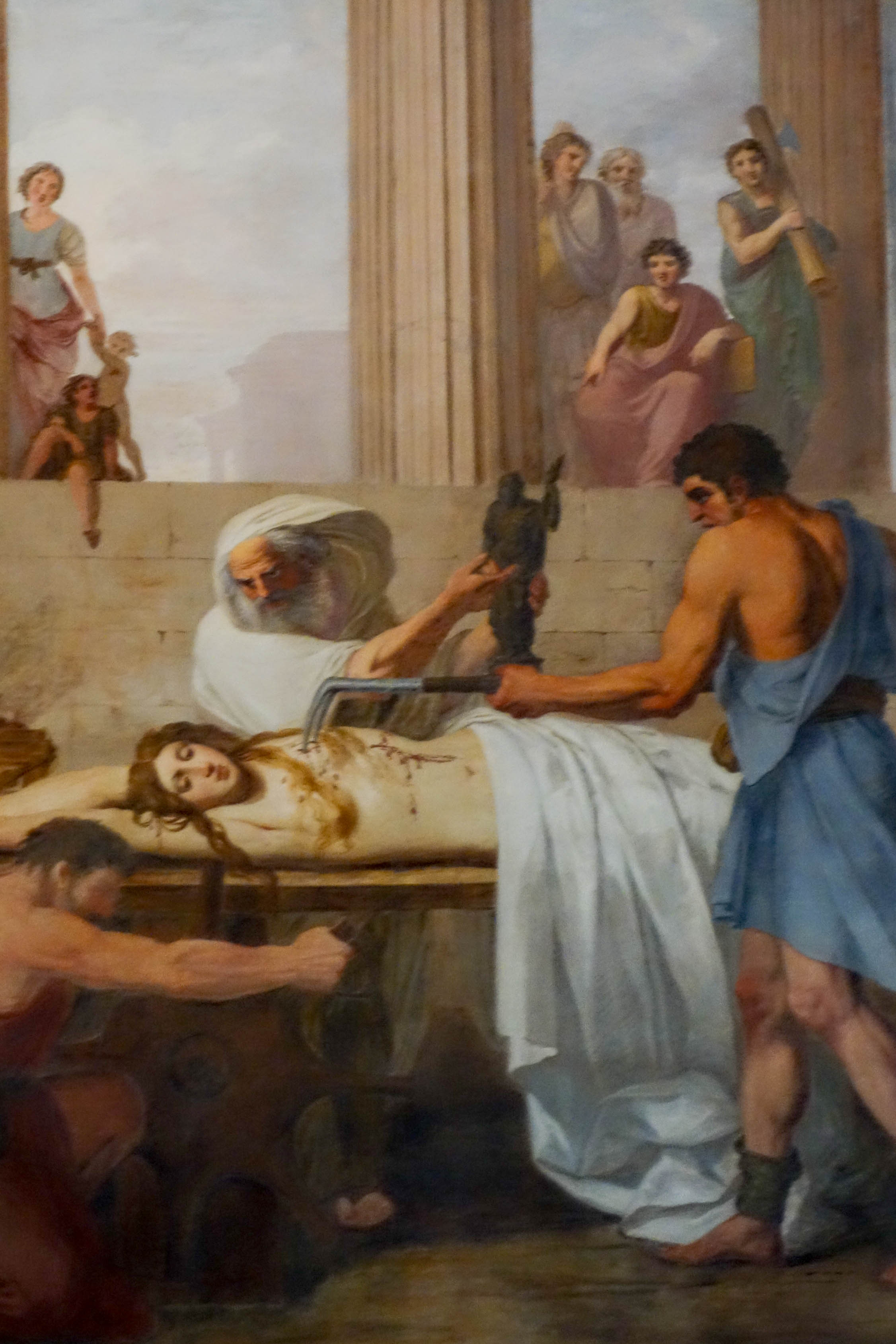
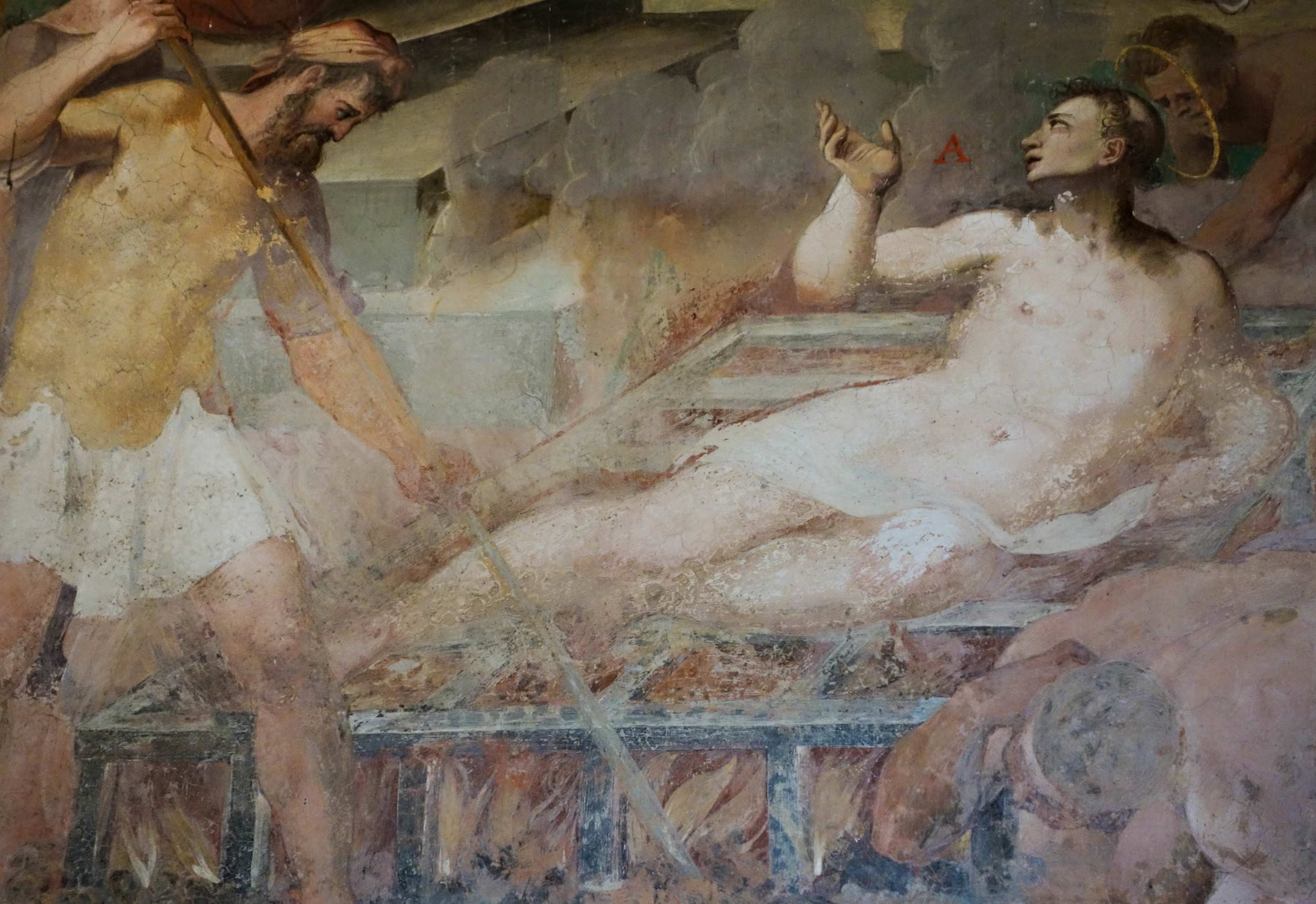
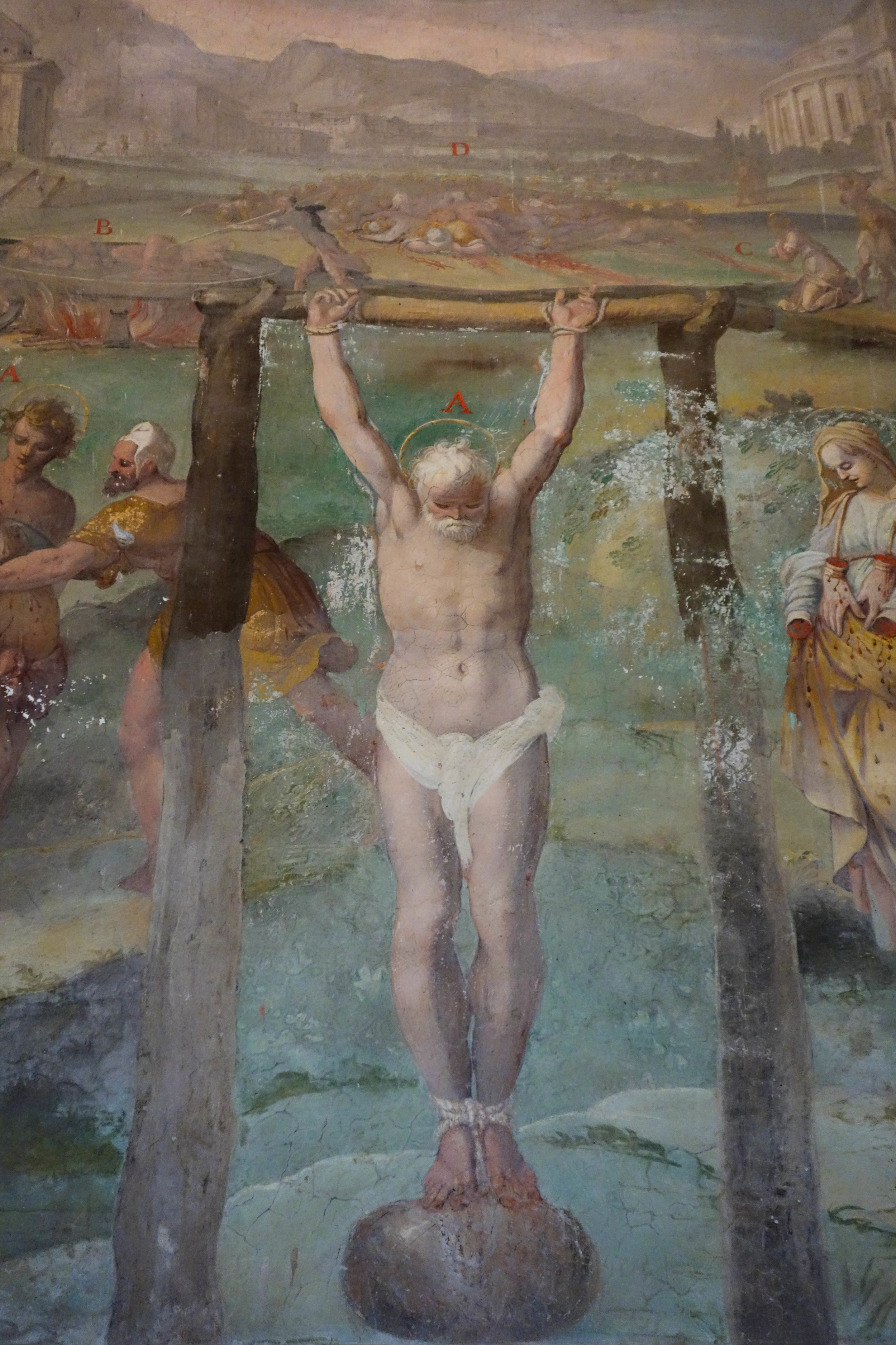
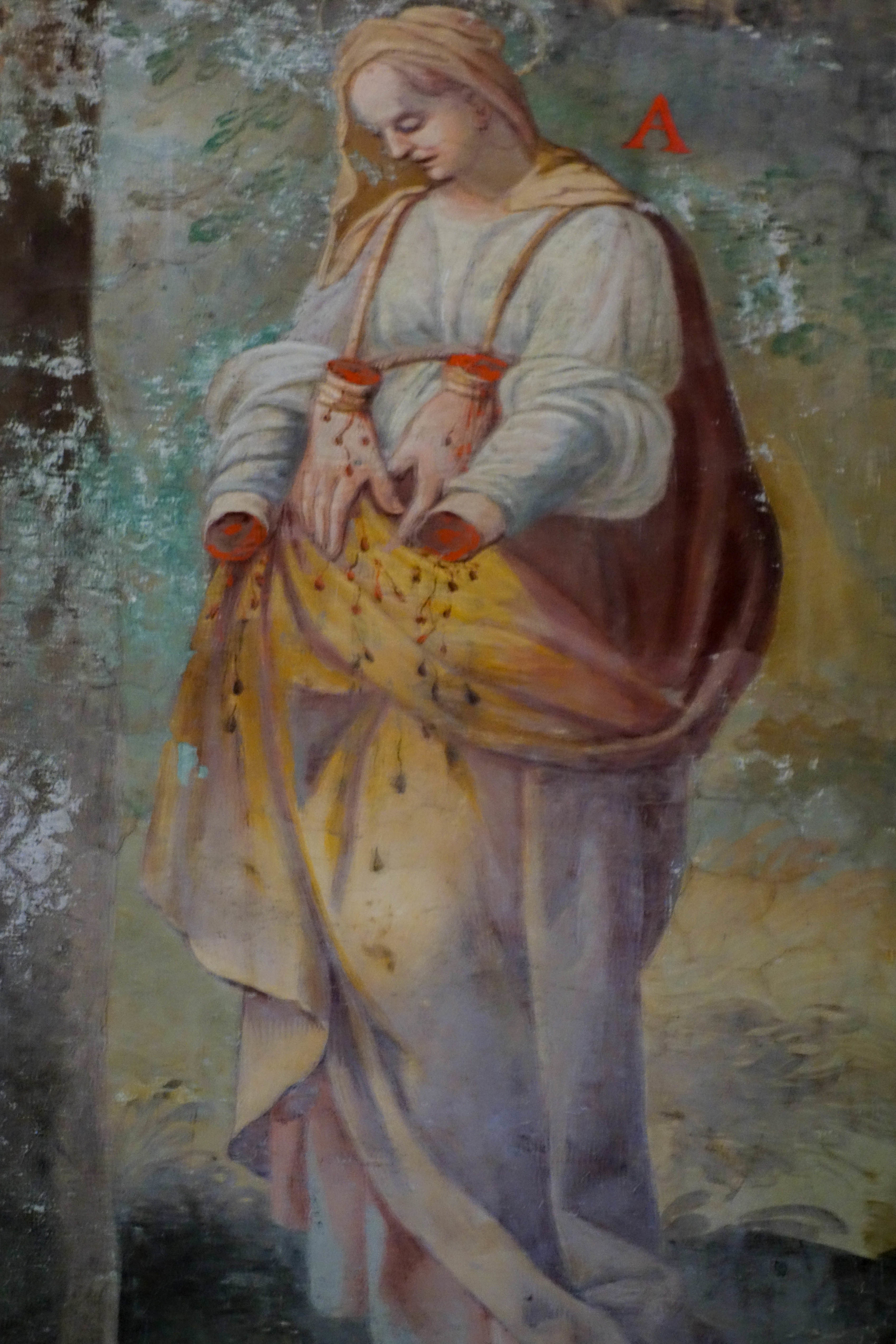
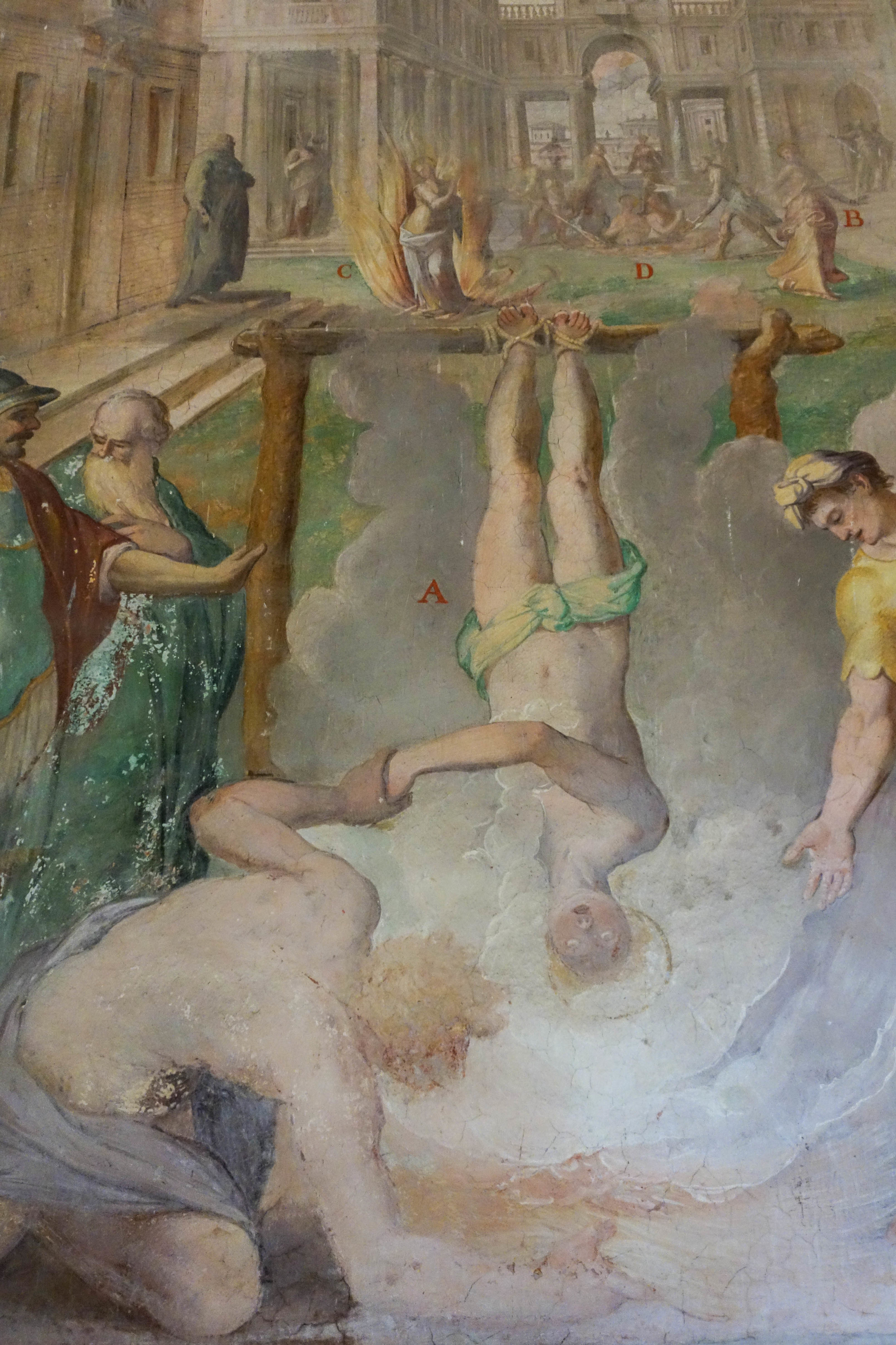
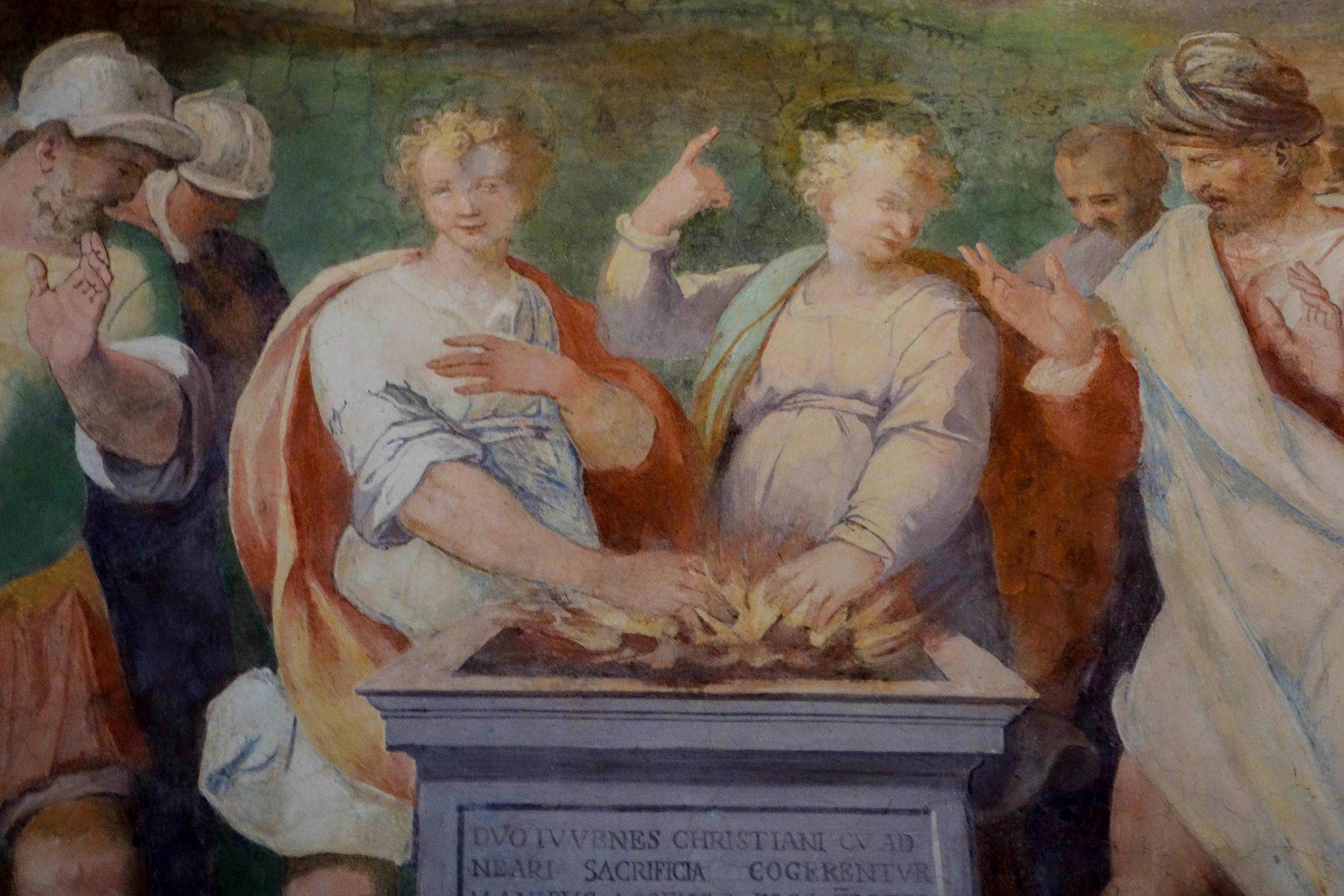

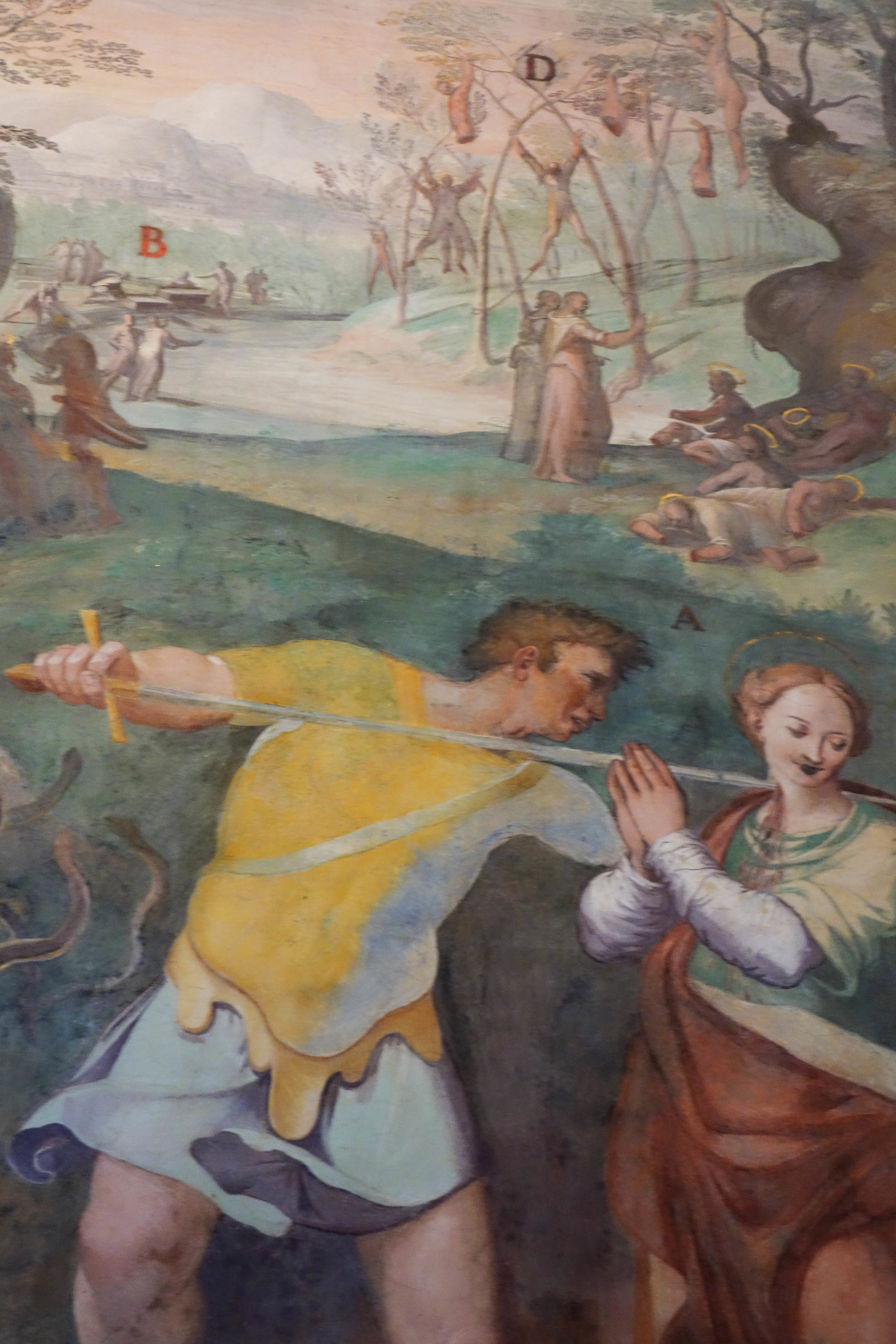
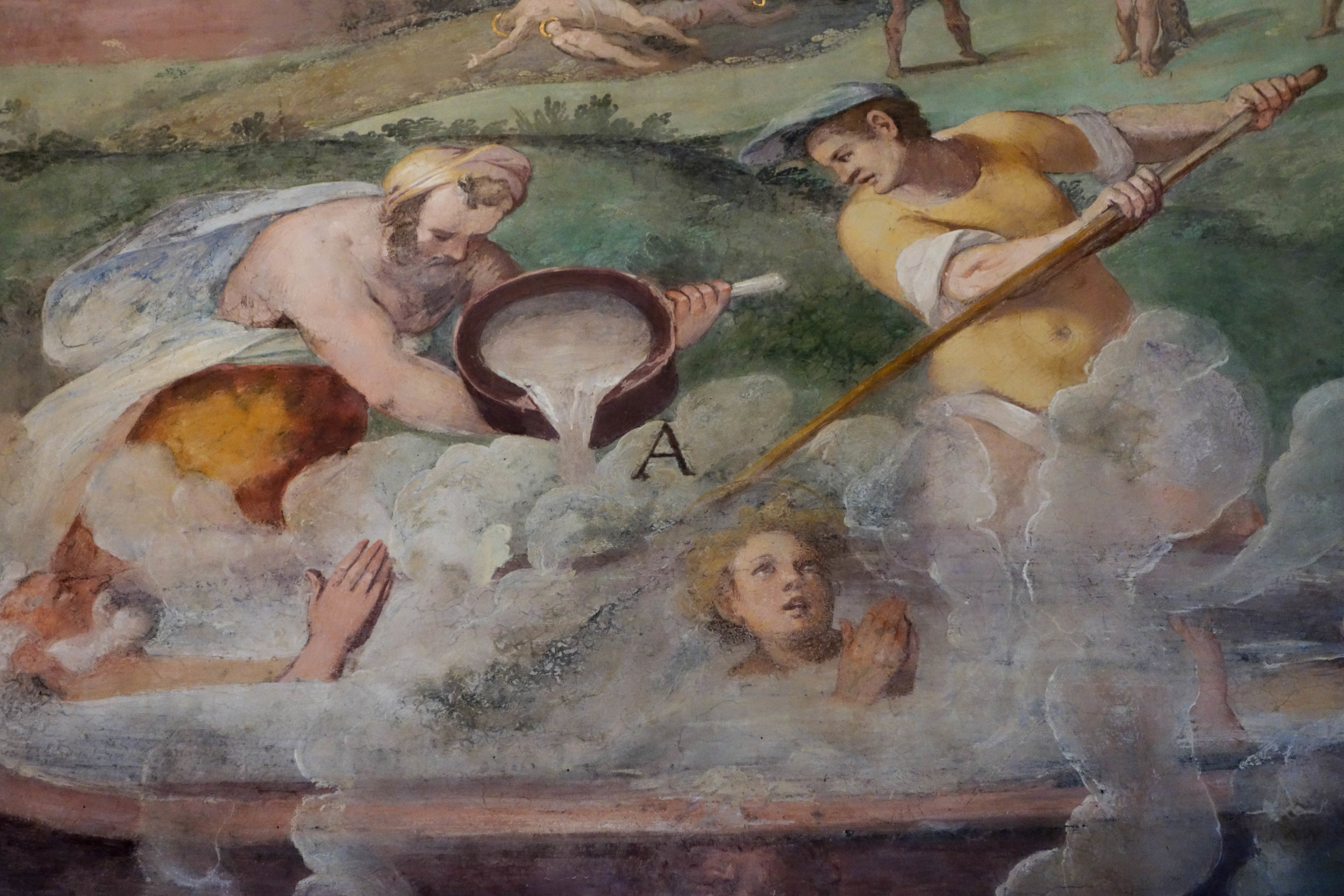
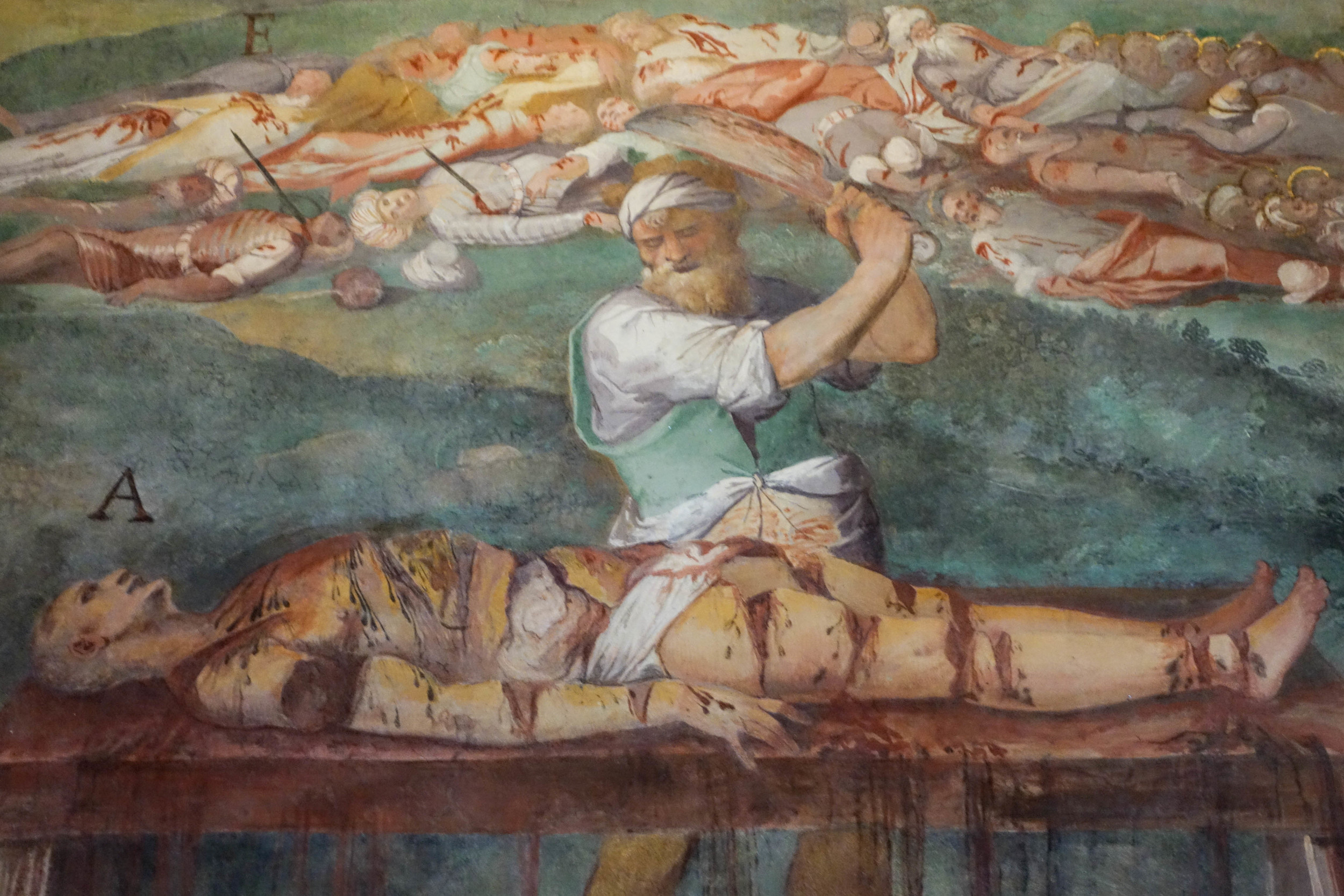
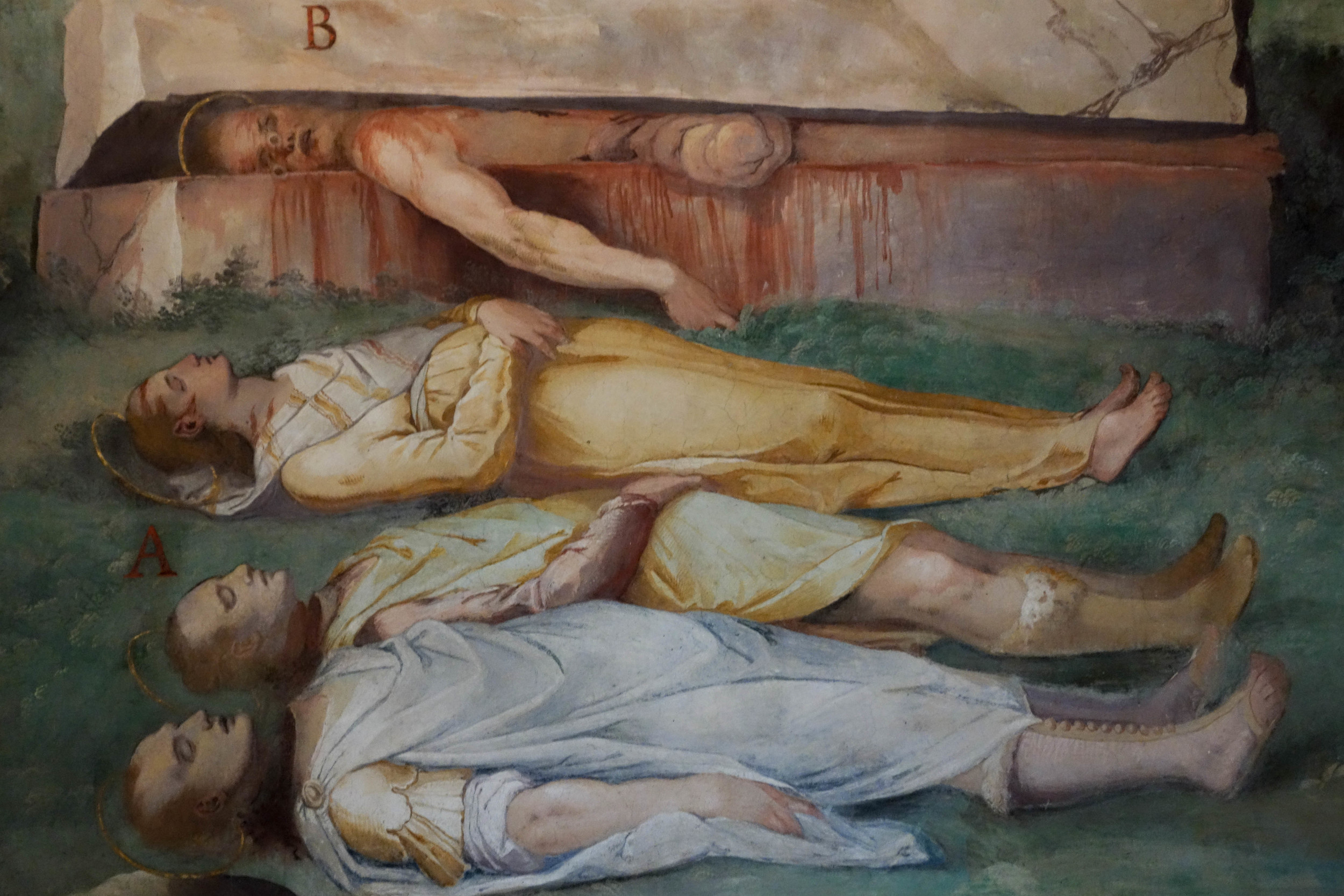
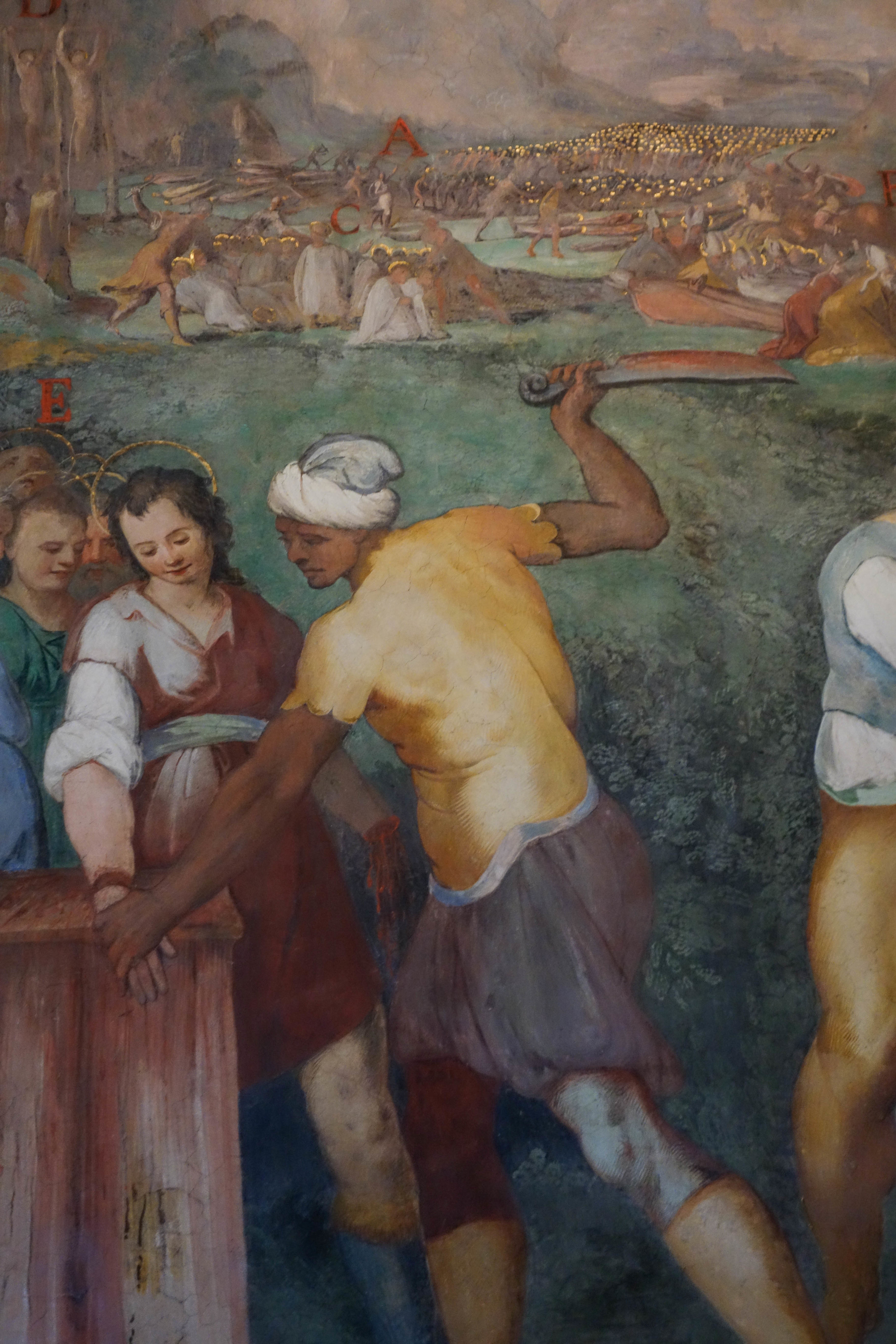
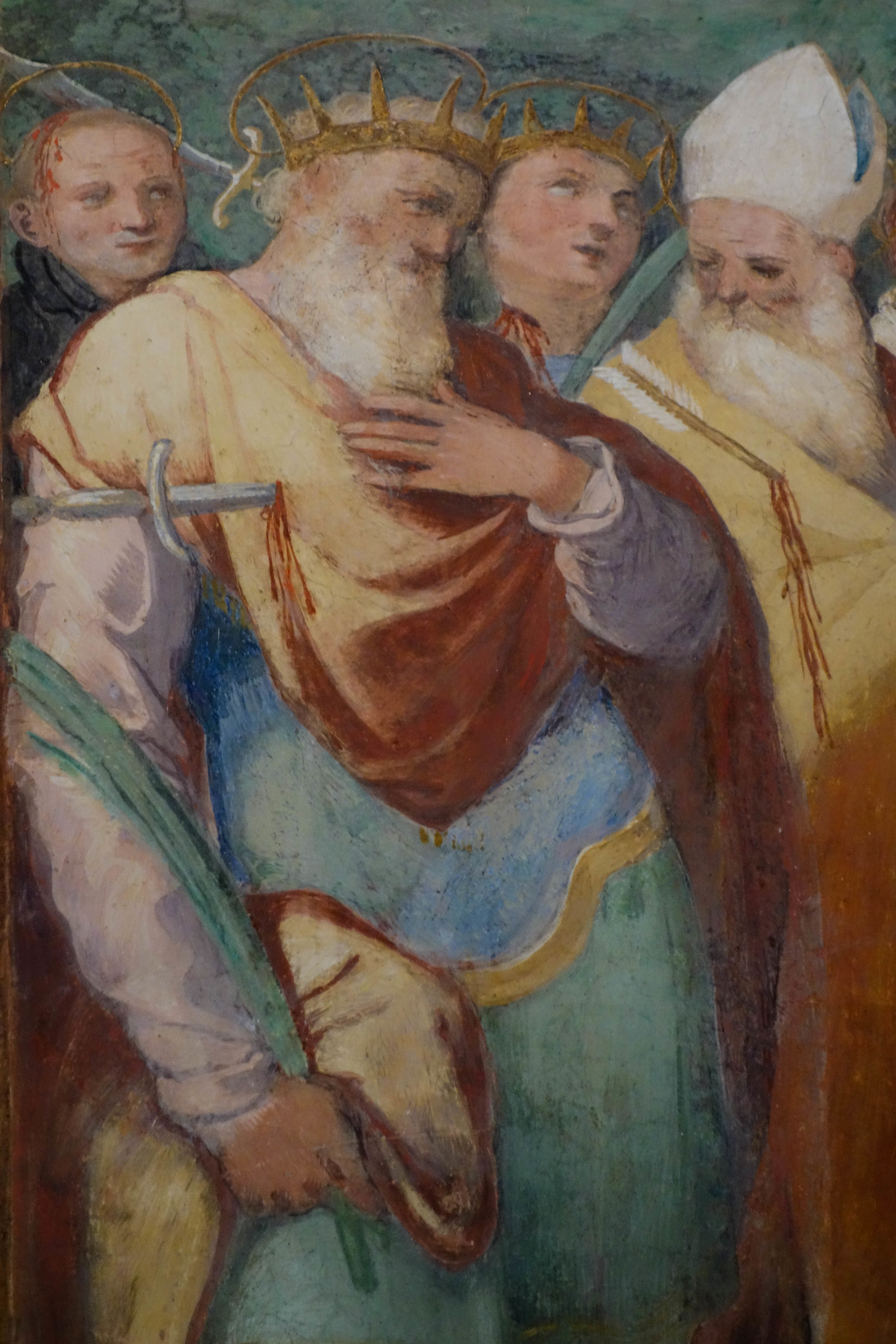
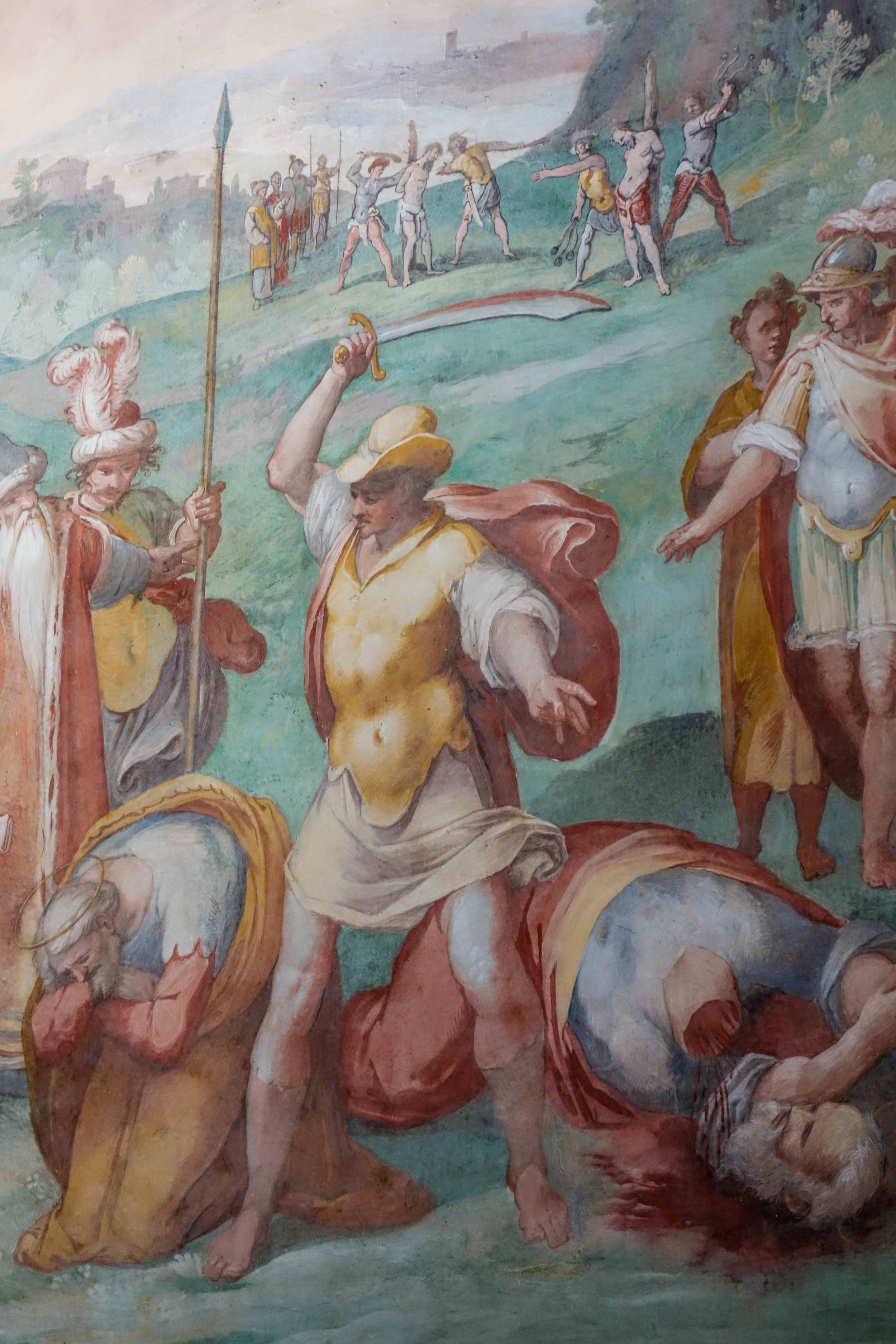
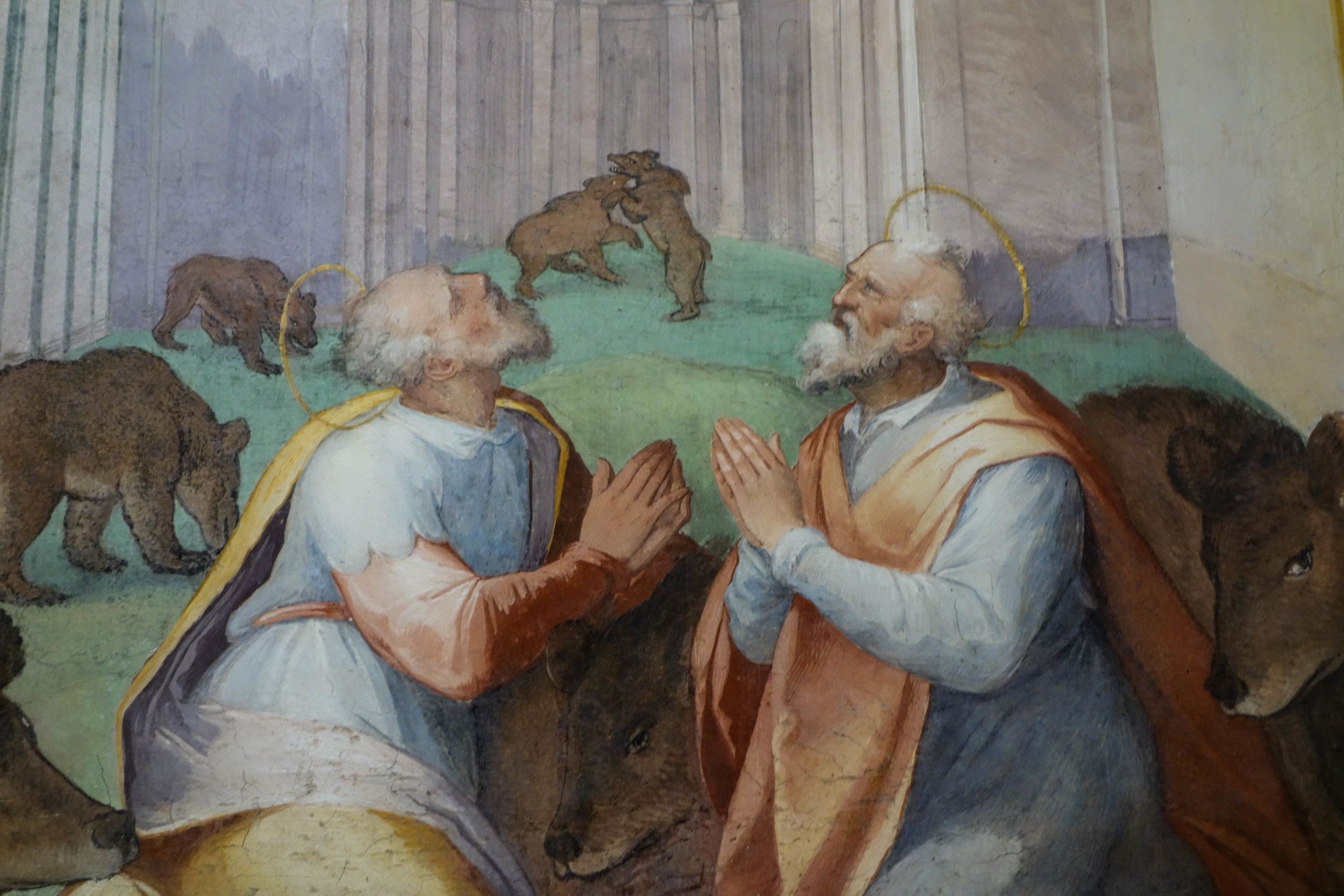
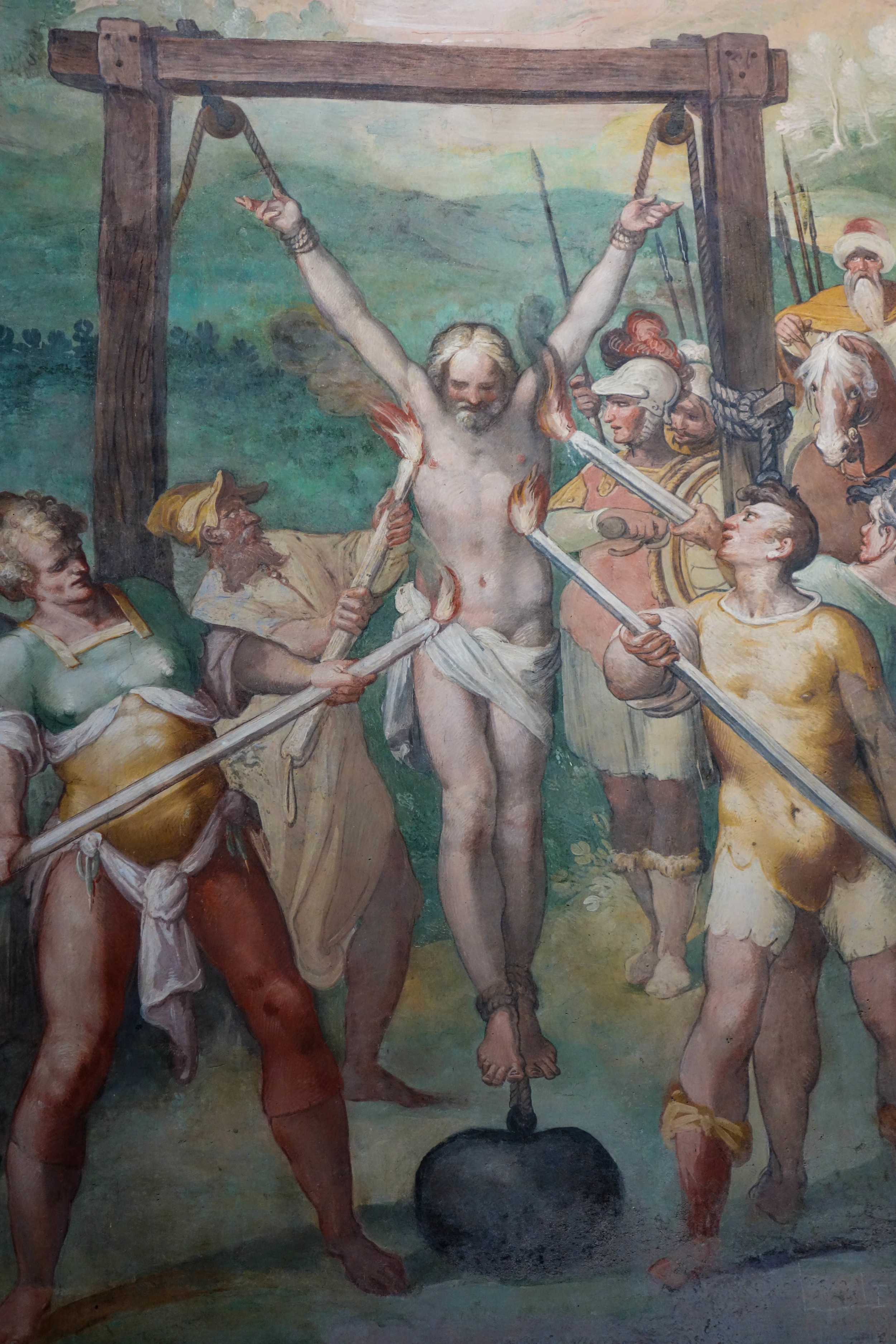
Your Custom Text Here
"To single out details from the great dream of Roman Churches, would be the wildest occupation in the world. But St. Stefano Rotondo, a damp, mildewed vault of an old church in the outskirts of Rome, will always struggle uppermost in my mind, by reason of the hideous paintings with which its walls are covered. These represent the martyrdoms of saints and early Christians; and such a panorama of horror and butchery no man could imagine in his sleep, though he were to eat a whole pig raw, for supper. Grey-bearded men being boiled, fried, grilled, crimped, singed, eaten by wild beasts, worried by dogs, buried alive, torn asunder by horses, chopped up small with hatchets: women having their breasts torn with iron pinchers, their tongues cut out, their ears screwed off, their jaws broken…. So insisted on, and laboured at, besides, that every sufferer gives you the same occasion for wonder as poor old Duncan awoke, in Lady Macbeth, when she marveled at his having so much blood in him."
— Charles Dickens, Pictures from Italy (1846) on the Chiesa di Santo Stefano Rotondo
The biggest draw at Santo Stefano Rotondo is undoubtably the church's infamous martyr murals. The very same ones that horrified Charles Dickens.
Each mural is accompanied by a Latin subtitle. It lists the Emperor who ordered the torture (hi Diocletian), a short description of the torture, and sometimes the name of the martyr who died that way. There are helpful letters in each fresco so you can easily match the figures to the description. If you sit there and translate all the legible subtitles, it starts to read a little bit like the lyrics to People Who Died by The Jim Carroll Band.
The murals themselves are overwhelming when taken as a group. They cover every single wall and are about 6’ wide by 8’ tall. The figures seem to wander from frame to frame, all part of the same nightmarish landscape. A method of torture in the background of one fresco becomes the foreground elsewhere as if it’s just another scene in a horror movie’s tracking shot. Some scenes are chaotic bloodbaths. Others are calm acts of carefully allotted violence. It’s hard to say which is more disturbing.
The colors have faded over the years and some pieces of plaster have chipped away but a massive restoration project is underway. Last time I was there they were just setting up scaffolding. This time there was a team of preservationists at work with several frescos finished. I can only imagine the impact the church will have when every image is clear, complete with fresh strokes of vibrant red blood.
"To single out details from the great dream of Roman Churches, would be the wildest occupation in the world. But St. Stefano Rotondo, a damp, mildewed vault of an old church in the outskirts of Rome, will always struggle uppermost in my mind, by reason of the hideous paintings with which its walls are covered. These represent the martyrdoms of saints and early Christians; and such a panorama of horror and butchery no man could imagine in his sleep, though he were to eat a whole pig raw, for supper. Grey-bearded men being boiled, fried, grilled, crimped, singed, eaten by wild beasts, worried by dogs, buried alive, torn asunder by horses, chopped up small with hatchets: women having their breasts torn with iron pinchers, their tongues cut out, their ears screwed off, their jaws broken…. So insisted on, and laboured at, besides, that every sufferer gives you the same occasion for wonder as poor old Duncan awoke, in Lady Macbeth, when she marveled at his having so much blood in him."
— Charles Dickens, Pictures from Italy (1846) on the Chiesa di Santo Stefano Rotondo
The biggest draw at Santo Stefano Rotondo is undoubtably the church's infamous martyr murals. The very same ones that horrified Charles Dickens.
Each mural is accompanied by a Latin subtitle. It lists the Emperor who ordered the torture (hi Diocletian), a short description of the torture, and sometimes the name of the martyr who died that way. There are helpful letters in each fresco so you can easily match the figures to the description. If you sit there and translate all the legible subtitles, it starts to read a little bit like the lyrics to People Who Died by The Jim Carroll Band.
The murals themselves are overwhelming when taken as a group. They cover every single wall and are about 6’ wide by 8’ tall. The figures seem to wander from frame to frame, all part of the same nightmarish landscape. A method of torture in the background of one fresco becomes the foreground elsewhere as if it’s just another scene in a horror movie’s tracking shot. Some scenes are chaotic bloodbaths. Others are calm acts of carefully allotted violence. It’s hard to say which is more disturbing.
The colors have faded over the years and some pieces of plaster have chipped away but a massive restoration project is underway. Last time I was there they were just setting up scaffolding. This time there was a team of preservationists at work with several frescos finished. I can only imagine the impact the church will have when every image is clear, complete with fresh strokes of vibrant red blood.